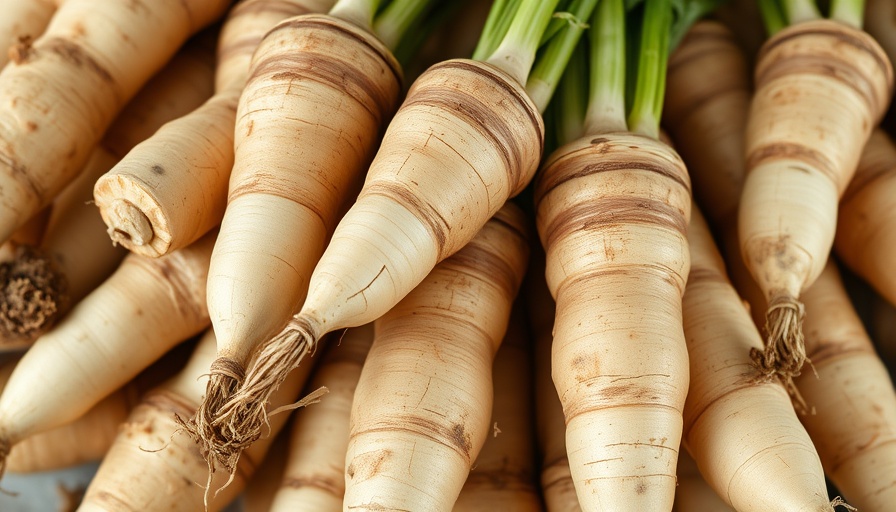
Why Horseradish Is a Garden Essential
Horseradish is more than just a spicy condiment; it boasts numerous health benefits including antioxidant properties and anti-inflammatory effects. With its unique flavor profile, it's a successfully cultivated vegetable loved by many home cooks and gourmet chefs alike. Understanding how and when to harvest this potent root can enhance your culinary creations and promote better health.
Timing is Everything: When to Harvest Horseradish
Listening to the whispers of the season can help you know exactly when to harvest horseradish. Experienced gardeners suggest waiting until after the first hard frost, as this allows the plant to maximize its root growth. Carol Waters, a horticultural educator, emphasizes the importance of timing. "Harvesting too early can result in undersized roots and diminished flavor," she cautions. Aim for harvesting your horseradish in late fall, just before the ground freezes.
The Right Techniques for Harvesting
Unlike many garden vegetables that sprout from seeds, horseradish grows from slivers of its main root, which requires a slightly different harvesting approach. The preferred method among gardeners is manual digging using a garden fork. Make sure to loosen the soil around the plant to a depth of at least one foot—we don’t want to break the root in the process!
Once you’ve successfully lifted the main root, you can harvest offshoots for replanting, focusing on roots that are eight inches or longer. This technique not only gives you delicious horseradish for your meals but ensures a steady supply for future planting.
Preparation: Storing Your Harvest
After harvesting, how you store horseradish is crucial for maintaining its flavor and health benefits. If consuming soon after harvest, clean it thoroughly and keep it in a sealed bag in the refrigerator. For those who wish to store it longer term, a trick is to use moist sand in a plastic bag or root cellar—this keeps it fresh and ready to use in your favorite recipes.
Avoiding Common Pitfalls
Even seasoned gardeners face challenges when harvesting horseradish. To avoid common missteps, be mindful of the soil conditions: it should be loose enough to allow for easy digging but not overly wet, which can lead to root rot. Additionally, remember to cut the roots correctly by angling the cut for easy replantation.
Embracing the Harvesting Journey
Harvesting horseradish can be a rewarding experience, connecting you to the rhythms of nature and providing a sense of satisfaction in growing your own food. As you practice these techniques, you’ll not only enhance your garden but also improve your meals. Consider integrating horseradish into various dishes, exploring new flavors and encouraging your family to join in the gardening fun!
Taking the time to hone your horseradish harvesting skills can lead to flavorful culinary experiences and healthier meals. Are you ready to dig into this gardening adventure?
 Add Row
Add Row  Add
Add 




Write A Comment